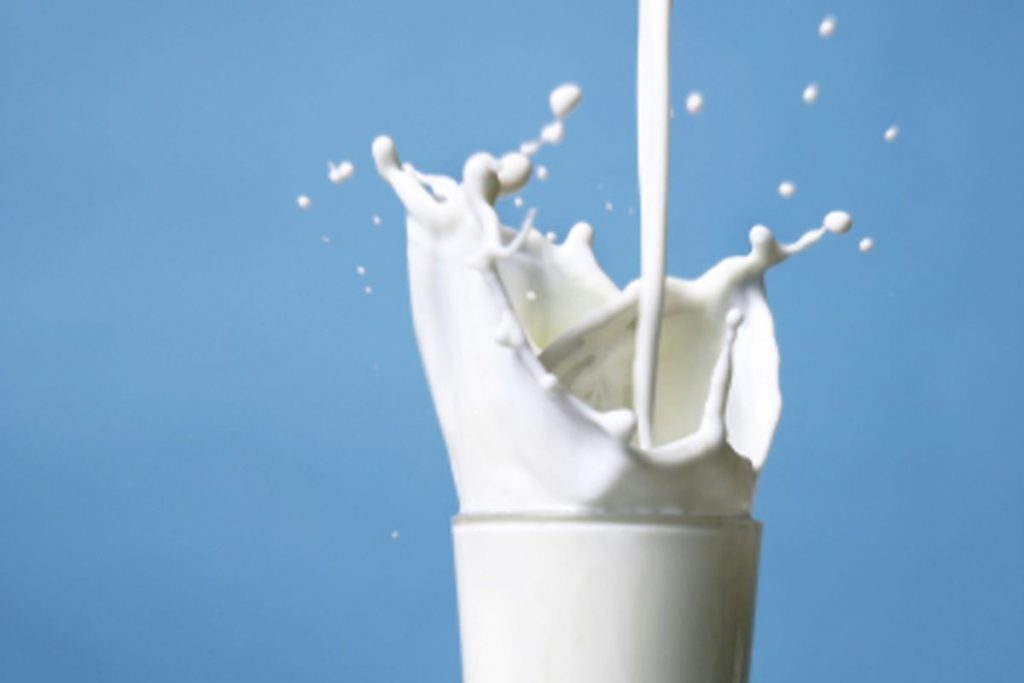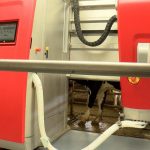
Mid-June dairy prices weakened and the week was lean on fodder for the markets. The most anticipated report, May Milk Production, was to be released Friday afternoon after the markets has finished trading, but was delayed until Monday, in observance of the Juneteenth Federal holiday, as Federal offices were closed. Many expect a sizeable gain in milk output from May 2020.
The CME Cheddar blocks closed Friday at $1.4925 per pound, down 0.75 cents on the week and $1.1575 below a year ago. The barrels finished at $1.5425, down 13 cents, lowest since April 6, 74.25 cents below a year ago, and 5 cents above the block. There were 14 sales of block on the week and 42 of barrel.
Milk remains plentiful in the Midwest despite temperatures hitting the 90 degree mark, according to Dairy Market News. Some cheesemakers said plentiful was an understatement, and are operating at maximum capacity. The block-over-barrel price inversion is viewed by many as an indicator of market stability.
Retail and food service cheese demand in the west held steady this week. Export demand increased, particularly from Asian markets, as prices fell. Cheesemakers are running full schedules to take advantage of the available milk, says DMN.
Butter closed the week at $1.7850 per pound, down 0.75 cents and 6.50 cents below a year ago, on 17 sales.
Midwest butter producers are staying busy as cream is plentiful. Retail demand has slowed but is meeting seasonal expectations. Some butter plant managers continue to say that food service sales are better than expected.
Plenty of cream is available in the West though contacts report that widespread transportation issues were creating delivery delays. Lots of cream is flowing into Class II and III production to support growing cream cheese demand and steady to strong ice cream orders. Retail demand remains soft but food service orders are healthy. Dine-in restrictions were lifted in California this week, and contacts expect that will provide an additional boost to demand in the next few weeks.
Grade A nonfat dry milk fell to $1.25 per pound Thursday, lowest since April 21, but closed Friday at $1.2650, down 3.50 cents on the week and 23.25 cents above a year ago. There were 19 sales reported on the week.
CME dry whey fell to 59.25 cents per pound Wednesday, lowest since March 12, but closed Friday at 61 cents per pound, down 1.75 cents on the week but 28.25 cents above a year ago. Only 2 cars were sold on the week.
There’s plenty of uncertainty in the markets and, even as concern mounts in the U.S. over growing inflation, the U.S. dollar has strengthened considerably, which is not a good sign for exports, especially powder.
Milk production typically peaks at this time of year but StoneX Dairy reminds us that component levels typically fall. Components are indeed following seasonal trends, says StoneX, but; “We are seeing levels at a surplus to where they stood at this time over the last couple of years. High volume as well as higher than normal component percentages means we can stretch an already ample supply of milk even further to meet production demands,” warned StoneX.
Thankfully, consumers are chewing through a lot of dairy products. Matt Gould, editor and analyst of the Dairy and Food Market Analyst, reported details in the June 21 Dairy Radio Now broadcast, crediting food service sales shooting higher as we reopened our country from the COVID-driven disaster of a year ago, even though retail sales have fallen some. Global sales also did well, he said, in part from Asian countries and their belief that dairy products help improve immunity.
Disappearance comparisons to a year ago may seem a little out of whack, he said, because last year people were going to grocery stores instead of restaurants but, starting with butter; in the three months ending in April, sales were up about 2% from a year ago and up 13%, compared to two years ago.
Cheese had a similar story. American type cheese was up 8%, compared to a year ago and up 6% from two years ago as restaurants were reopening and stocking up on dairy products.
At the same time, U.S. exports have been phenomenal, seeing the highest levels in years, if not record highs, on whey and milk powder. Whey exports the past three months were up 28% from a year ago, as was skim milk powder, he said.
Speaking of the international market, powder and butter pulled this week’s Global Dairy Trade (GDT) lower. The weighted average fell 1.3%, largest decline since March 16. It follows a 0.9% drop on June 1 and was the fifth consecutive decline.
The losses were led by whole milk powder, down 1.8%, following a 0.5% decline on June 1. Skim milk powder was down 1.7%, after falling 0.5% last time. Butter was down 1.7%, following a 5.4% decline on June 1.
In another political issue; while the U.S. dairy industry is fighting against the use of dairy terms on plant-based beverages and spreads, the June 16 Daily Dairy Report says the EU dairy industry did not fare well in that regard.
“Earlier this month parliament withdrew Amendment 171, which would have prevented plant-based alternative products from mimicking dairy products,” the DDR stated. “Last October, the European Commission voted in favor of banning the use of dairy-related, descriptive terms such as ‘buttery’ and ‘creamy’ on the packaging of plant-based alternative products. While parliament did not specify why it withdrew the amendment, draft legislation faced opposition from a coalition of 21 environmental, consumer, and animal welfare groups.” The amendment would also have prohibited plant-based companies from using familiar dairy packaging such as cartons for milk alternatives or blocks for margarines.
The Agriculture Department’s Livestock, Dairy, and Poultry Outlook mirrored milk price and production projections in the June 10 World Agricultural Supply and Demand Estimates. The Outlook projected U.S. milk cows to average 9.495 million head in 2021, 25,000 higher than last month’s forecast. Based on the recent upward trend in milk cow numbers and relatively low dairy cow slaughter, milk cows are expected to continue increasing into the third quarter of 2021. With relatively high feed prices and slightly lower milk prices than expected last month, cow numbers are anticipated to level off in the second half of the year.
Expected high summer temperatures and dry conditions affecting cow comfort and grain crops resulted in a slightly lower forecast in yield per cow for third quarter but unchanged for the rest of the year. Consequently, the 2021 milk per cow forecast is 24,065 pounds, 5 pounds less than last month’s forecast.
Cow numbers in 2022 are also forecast to average 9.495 million head, 30,000 higher than last month’s estimate. The Outlook stated; “Milk production usually responds to changes in input costs with a lag of several months. Due to relatively high input costs and weaker expected milk prices in mid-2021, milk cow numbers in 2022 are expected to decline from the second half of 2021. The forecast for milk per cow was 24,335 pounds, unchanged from last month’s forecast.”
Extreme hot weather, particularly in California, could temper milk output in June. The USDA Natural Resources Conservation Service (NRCS) in California is offering just under $22.8 million in aid through the Environmental Quality Incentives Program (EQIP), according to Western United Dairymen (WUD).
“California is one of four states in the nation to pilot this important program,” says WUD, “to help agricultural producers, including Tribes, alleviate the immediate impacts of drought and other natural resource challenges on working lands.”
This week’s Crop Progress report shows 96% of U.S. corn was emerged, as of the week ending June 13, up from 90% the previous week, 2% ahead of a year ago, and 5% ahead of the five year average. 68% was rated good to excellent, down from 72% the previous week and 3% behind a year ago.
Soybean plantings were 94% completed, up from 90% the week before, 2% ahead of a year ago, and 6% ahead of the five year average. 86% are emerged, 7% ahead of a year ago and 12% ahead of the five year average. 62% of the crop was rated good to excellent, down from 72% a year ago.
StoneX June 15 Early Morning Update says “Many of our dairy farm customers want to know when to buy feed. The short answer: no one knows for certain. We don’t have corn on a buy-signal yet. What we do know is that historically its July weather not June that really impacts yields. So plenty of upside risk potential still exists, yes, but people who do not need to be in the market for physical, only profit, are selling these days. So let them,” advises StoneX.
The Daily Dairy Report’s Sarina Sharp put things into, pardon the pun, sharp perspective in the June 11 Milk Producers Council newsletter. She wrote; “In a normal year, $17 and $18 milk is more than enough to pay the bills but amid higher feed costs, rising wages, and a trucker shortage, expenses are adding up quickly. Losses are accumulating, especially for producers who suffered from last year’s de-pooling and this year’s spike in feed costs. In recent weeks there have been noticeably more heifers for sale, and more chatter about dairy producers ready to exit the business, either due to their own fatigue or at the behest of their banker.”
There are expansions underway and Sharp says “Producers in regions with onerous supply management programs stand ready to fill any vacuums left by their peers who sell out. In some cases, the cows will simply move a few miles down the road, and the milk will keep flowing. In others, producers who have been held back by base programs will be given the opportunity to step up milk yields incrementally as their neighbor makes room. We’re likely to hear of more sellouts in the near future,” she concludes, “but the dairy herd is massive, and it will take many months of red ink to push milk production noticeably downward.”
U.S. fluid milk sales continue to struggle. USDA’s latest data shows April sales totaled 3.7 billion pounds of packaged fluid products, down 3.8% from April 2020.
Conventional product sales totaled 3.5 billion pounds, down 3.7% from a year ago. Organic products, at 240 million pounds, were down 4.8%, and represented 6.5% of total sales for the month.
Whole milk sales totaled 1.2 billion pounds, down 10.5% from a year ago, with year to date consumption down 8.0% from a year ago. Whole milk represented 32.4% of total milk sales for the four month period.
April skim milk sales, at 213 million pounds, were down 11.4% from a year ago and down 14.5% year to date.
Total packaged fluid milk sales for the four months amounted to 15.1 billion pounds, down 4.9% from 2020. Conventional product sales totaled 14.1 billion pounds, were down 5.4%. Organic products, at 976 million pounds, were up 2.3%, and represented 6.5% of total milk sales for the period.
The U.S. Food and Drug Administration (FDA) issue a final rule to modernize the standard of identity for yogurt. The announcement comes more than 20 years after the yogurt industry first petitioned the agency to update the standard of identity, according to the International Dairy Foods Association (IDFA), and more than 11 years since the agency first issued a proposed rule.
IDFA called the move ‘a highly anticipated and much needed first step,’ and advocated that FDA more expeditiously and transparently modernize food standards, including the 102 dairy food standards of identity, to allow the industry to continue to offer nutritious, innovative foods that satisfy consumer needs and desires.”
Meanwhile, the IDFA and other U.S. dairy industry leaders are virtually meeting this month with Members of Congress to advocate for changes to several Child Nutrition Reauthorization policies and discuss the nutritional benefits of dairy products in child nutrition programs.
Lee Mielke is a graduate of Brown Institute in Minneapolis, MN. He’s formerly the voice of the radio show “DairyLine,” and his column appears in agricultural papers across the U.S. Contact him at lkmielke@juno.com.

























